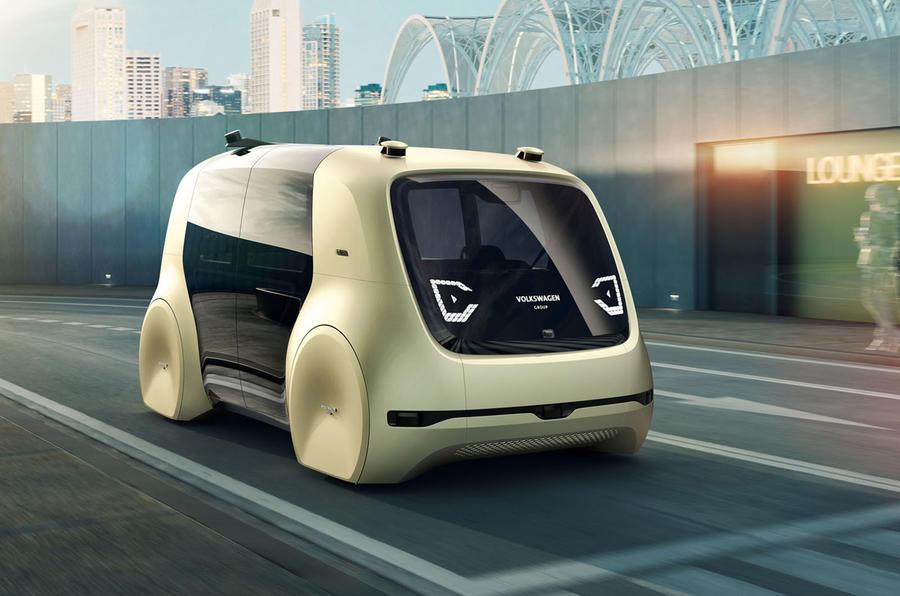Future developments in technology-related social inclusion and exclusion in urban mobility
Master thesis interview with Nathalie Dezoteux - by Klara Kleutel
Urban mobility systems – ranging from individually owned cars to taxis and car sharing solutions, from public transport to cycling infrastructure – allow us to participate in the social, economic and political life of our community: They get us to school, to work or to the hospital, allow us to visit our friends or participate in elections. However, not everyone benefits from the different mobility options in the same way: Especially elderly, disabled, migrants, youth, ethnic minorities and low-income or unemployed might not have access to or cannot afford the available means of transport. As a consequence, they may feel excluded. It is therefore important to understand what drives social inclusion and exclusion in urban mobility and how it can be fostered or avoided.
This becomes even more relevant considering that urban mobility is undergoing rapid developments. Population growth, an aging population and increased urbanization put pressure on the current system. At the same time, technology-driven innovation is reshaping the urban mobility landscape. Nathalie Dezoteux, a recent graduate from the Rotterdam School of Management, took a closer look at this issue in her master thesis.
Nathalie, what was your master thesis about?
I wrote my master thesis about social in- and exclusion in urban mobility. To be more specific, I explored how future urban mobility systems might look like and how technological innovations could affect how social inclusive or exclusive they are.
What is social inclusion and exclusion?
Social exclusion in urban transport means that (some) people are excluded from social, political or economic life. Think, for instance, of an elderly woman who gets sick and needs to go to a hospital but can’t do so because she doesn’t know how to drive a car and there is no public transport available. Or the other way around: a socially inclusive urban transport system would give citizens access to all these societal systems and institutions, like healthcare, education, the job market and leisure activities.
How would a particularly socially inclusive urban mobility system look like?
There are different definitions and criteria of social inclusivity of urban transport systems. One I came across during my literature study mentioned the four criteria affordability, accessibility, acceptability and availability. It’s hard to name one mobility system that is most socially inclusive because this depends on the local conditions. But generally speaking, if an urban mobility system is affordable, accessible, well accepted and available to as many people as possible, it can be considered highly socially inclusive. Let’s use a good cycling infrastructure like we have here in the Netherlands as an example: Bikes are cheap, well accepted, available and accessible for many. There are of course exceptions. For instance, elderly or disabled might find a bicycle-based urban mobility not accessible. So, you can see bikes as a fairly but not perfectly socially inclusive urban mobility option.
How did you come up with this topic?
When talking about sustainability in the transport sector, mostly environmental aspects are looked at, not so much the social ones."
I became interested in urban mobility during my studies. And I’ve always been following companies like Tesla and Uber, I find them really fascinating. But so far, when talking about sustainability in the transport sector, mostly environmental aspects are looked at, not so much the social ones. You start seeing more research on this too, but I feel it is not yet getting the attention it should. So, I thought it would be really interesting to look at how urban mobility will look like in twenty years considering all the demographic and technological developments. And what social impacts this future system might have.
How did you approach this research?
I used the Delphi method. It’s a forecasting method which you use when you want to look into the future. You conduct several rounds of individual interviews or surveys – in my case three – with a selection of experts in the respective field. After each round, you summarize the responses and send them back to the experts so they can reconsider their answers. The idea is that eventually, they reach consensus on the issues at hand.
What kind of experts did to talk to?
I contacted more than twenty experts who all had substantial experience in this field as well as with sharing their knowledge and were internationally recognized. This was a mix of academics, public sector and company representatives from different countries. Eventually, eight of them participated throughout the entire study.
And they all reached consensus?
That not. When using the Delphi method, it’s of course possible that they still disagree on certain issues. But the idea is that you see which statements are most agreed upon among the experts and which ones not. That gives a good indication of which developments are more likely to happen than others.
Tell us a bit more about the findings of your research. Which technical developments can we expect in the coming years?

An increase of automation of urban transport can lead to more social inclusion and social exclusion"
The experts could agree on a few main developments. The first one is an increase of automation of urban transport. The impact on social inclusion and exclusion is twofold. It could increase social inclusion because certain population groups, like elderly for instance, would not be dependent on their own driving skills anymore but could just hop on a self-driving car. But it could also lead to social exclusion due to the high number of transport-related jobs that may be lost, think of taxi drivers for instance.
Another trend the experts foresee is increased use of data and information to optimize and customize urban mobility. This could both lead to social inclusion and exclusion. As transport becomes more tailored towards specific needs, social inclusiveness may increase. On the other hand, some people might avoid using these kinds of transport due to privacy concerns.
What could be the consequences of those developments?
One concern the experts raised were the technical skills needed to use transportation. An example would be cashless payments for fares. It might become harder for certain people, for instance elderly or disabled, to make use of transportation means due to the higher technical barrier.
Another interesting finding was that new technological developments might lead to new governance models, policy frameworks and new forms of cooperation between governmental, civil society and industry actors. This is because the technological developments can put pressure on social inclusion and policy makers need to react for that.
What did you find most challenging?
I’d never used this research method before and there are few other theses or research papers in this field I could learn from. So that was challenging. And staying in touch with the experts. Relying on their input certainly delayed the research process, it’s just a very time-intensive method. So as a tip for others: Start early if you’re planning on involving external partners in your research!
What did you like most about your thesis?
I did enjoy using this method. It’s challenging but I also learnt a lot and it allowed me to explore what might be happening in the transport sector in the future. I also liked that my topic is very applied, very real. You can experience it every day around you.
What could readers take away from your research?
I guess researchers could use it as a starting point for more in-depth research. You could, for instance, look into the differences in these developments between cities or countries. I’m also not giving advise on how a perfectly inclusive mobility system should look like or how you can get there. So that’s something that still needs to be investigated.
More about Nathalie
Nathalie recently graduated from the master program Global Business and Sustainability at the Erasmus University. Before that, she did a bachelor in International Communications and Media with an exchange semester in Paris. During her bachelor studies, she grew interested in the topic of corporate social responsibility and sustainability in general. She then wrote her bachelor thesis about whether Shell is socially responsible.


